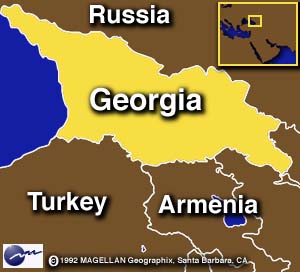No OSCE monitors in South Ossetia as talks collapse
 Vienna - The Organization for Security and Co-operation in Europe (OSCE) cannot send monitors to the Georgian region of South Ossetia for now, after talks broke down owing to Russia's insistence that the officers should not be stationed in the separatist province.
Vienna - The Organization for Security and Co-operation in Europe (OSCE) cannot send monitors to the Georgian region of South Ossetia for now, after talks broke down owing to Russia's insistence that the officers should not be stationed in the separatist province.
"There is no point in continuing negotiations in Vienna, at this stage," said Finland, the current OSCE chairman, in a statement.
While most of the organization's 56 members want to deploy unarmed military monitors in all of Georgia, including South Ossetia, diplomats said Russia wants to keep monitors out of that region.
OSCE members had agreed in August in principle to upgrade its mission in Georgia from 8 to 108 monitors to oversee the ceasefire. However, only 20 additional unarmed officers have been sent so far, and these cannot enter South Ossetia.
One month of negotiations failed to bring agreement on where the 80 remaining officers can be stationed.
"This is no longer, for the time being, a matter for diplomats," said OSCE spokesman Martin Nesirky, "this is elevated to the political level and needs to be dealt with in capitals."
According to diplomats, Finland broke off the negotiating process after Moscow did not approve a text on which the Russian and Georgian delegations had agreed.
Anvar Azimov, Russia's envoy at the Vienna-based OSCE, told reporters that further negotiations were subject to talks with the authorities in South Ossetia, which Moscow recognizes as an independent state.
Azimov said that South Ossetian authorities felt the eight OSCE observers who were in South Ossetia until the hostilities broke out "failed in their mission".
"They did not inform South Ossetian authorities about the possible aggression, they did not prevent this aggression," he said.
Although the OSCE's mission will not be upgraded for now, the European Union plans to send 200 civilian observers to Georgia until October 1.
But on the controversial issue of whether the mission will also be deployed in the breakaway regions of Abkhazia and South Ossetia, EU foreign policy chief Javier Solana said Monday that this decision would be made at a later stage.
Last Friday, OSCE chairman Finland presented a proposal to the organization's members couching the question of deployment in "constructive ambiguity", as one Western diplomat put it.
"It did not define that monitors could be deployed in South Ossetia, but it also did not say they could not be deployed," he said.
After Moscow rejected the Finnish draft, Russian and Georgian delegations managed to agree bilaterally on a new version of modalities for the OSCE mission.
However, Moscow demanded more changes on the text, diplomats said.
The 28 OSCE monitors are currently allowed to observe the ceasefire around, but not in the South Ossetia province, where separatist forces were aided by the Russian army in fights with Georgian government troops in August. (dpa)